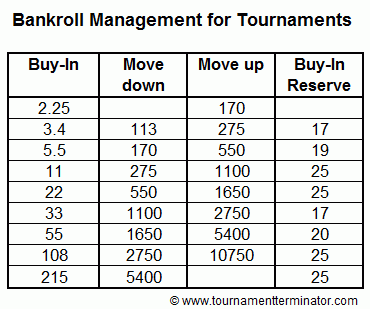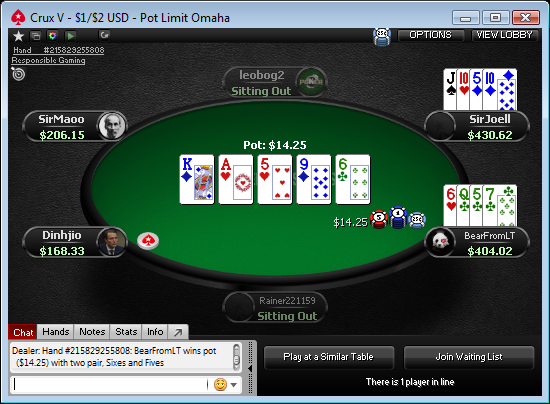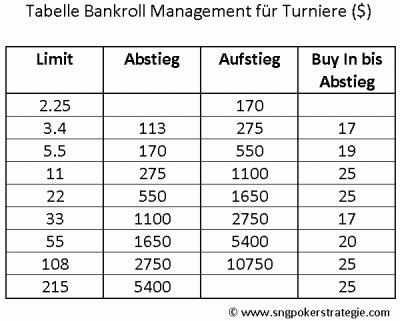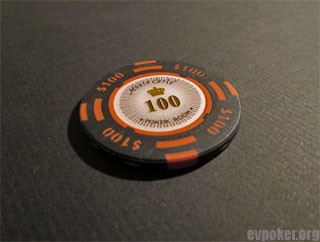Poker Bankroll Management Fixed Limit
If you’re serious about poker then you need to be equally serious about your bankroll. The reason to have a bankroll is so you can weather losing streaks and not completely deplete your funds.
3 tips for poker bankroll management; Recommended poker bankroll sizes for different game types; Lessons from Doug Polk’s $10,000 Bankroll Challenge; Poker bankroll management tools & apps; Let’s dive in. Jose Aguilar contributed to this article. Tip #1: Treat your poker bankroll like an investment—because it is. This bankroll management rule is meant to be bent (but not broken). Once you get your bankroll to about 150 buy-ins, you can take a step up the ladder more permanently. The biggest problem when it comes to this is that poker players have a big ego and forget that you can't just climb up the ladder.
How many times in a row is considered a losing streak? Five in row would bother many players but professional poker players knows that fluctuation (what some call luck) can be chaotic, coming in erratic waves that last even longer. The longer you play poker the more you will see that double digit losing streak – which is exactly why you need to a poker bankroll.
Types of Poker Bankrolls
Some poker players have a dedicated bankroll, some players’ goal is to have a dedicated bankroll, and some players just hide poker money from their partner. A casual poker player’s bankroll might be kept as any hobby or vacation fund might be utilized.
Recreational poker players who take the game seriously tend to keep a dedicated bankroll. These players might take out 20% of what they win. What they don’t do is take any money out of this precious poker fund to pay for dinner, slots, mortgage, or anything. In contrast, the professional poker player has to take money out of his bankroll for housing, taxes, retirement, healthcare, vacations, and all their living expenses.

What type of bankroll you need will depend on the reasons why you play poker in the first place. A beginner or casual player plays for fun and to learn. At this stage they play with what they can afford to spend for a hobby. They might go to the casino, play in some bar and home games, or put some money into an online poker site. It can cost money to have fun, and it’s a fast way to experience all aspects of poker.
The Size of Your Poker Bankroll
How much do you need for your poker bankroll? There are general sayings like, do not buy in for more than 2%-5% of your bankroll or quit a game anytime you lose more than 10% of your bankroll. Like most things in poker it depends. Other than the buy-in amounts, here are some of the things you’ll need to consider:
Type of Games
Firstly, it depends on the types of games you play since tournaments have a much higher variance than cash games. Granted, the prize pool can be very large in big tournaments, but even the best players can go a long spell without making any money. This makes for the high variance and therefore a high fluctuation in your bankroll.

Your Ability
The size of a bankroll also depends on how good a poker player you are. If you are a cash game player that wins 60% of the time, you obviously need a bigger bankroll than a player that wins 80% of the time. Loose players experience much higher variance than tight players. Players that learn how to be mentally strong tend to experience less variance than unstable players. The types of players you play with, their playing style and ability will also affects your variance.
The Betting Variations
The betting limits you play will also have significance for your bankroll. Limit hold’em players can have a somewhat smaller bankroll and follow the smaller end of the buy-in amounts than no-limit or pot-limit players. Limit players generally experience less volatility than no-limit or pot-limit, so your bankroll can be smaller.
The size of your bankroll will depend on many things, and it’s something you’ll have to decide for yourself. But for a general guide the following table may prove a useful starting point:
The professional would have to double these numbers to protect their lifelong bankroll. The casual player may be able to risk more, maybe 10% on a buy-in, but a dedicated bankroll should not risk more than 2-3% on any buy-in. Your poker bankroll is your lifeblood.
Building Your Poker Bankroll
Poker Bankroll Management Fixed Limited

Anyone, I repeat, anyone, can build a bankroll if they learn to play correctly at each level and keep within their limits. If you’re starting out then the main way to build a bankroll is slowly, through experience, not blowing through the levels and the money. If you’re financially independent and have the money to keep reloading then you don’t really need a poker bankroll. If your funds are limited then exercise discipline and follow our charts for guidance.
Conclusion
A sufficient poker bankroll is necessary to act as a cushion against variance. A bankroll is the one aspect of this crazy game of poker that we can control – which is why bankroll management is one of the most important poker skills. While it takes discipline, it’s a skill that must be learned if you are going to be successful at poker. Don’t risk too much money at one time by moving up too fast in levels. Let your poker bankroll dictate what limit you’ll be playing.
Related Lessons
By David Sasseman
Poker Bankroll Management Fixed Limits
David lives in Atlanta, Georgia, and has played over a million hands online and many thousands of hands in Mississippi, Louisiana, Florida, Illinois, Indiana, and Las Vegas casinos.

Related Lessons
The most common question poker newbies ask is about bankroll management:
- How big should my bankroll be?
- How much money should I win before I move up?
- I can hock my mom’s wedding ring – is that enough to go pro?
So, we thought it was time to write up a bankroll management guide.
In all honesty, it should’ve been the first thing we published. Because managing a bankroll is one of the most important skills a poker player can learn – sort of like the life-skill of knowing how to balance a checkbook.
If you don’t learn how to do it, you could end up like one of those deadbeats you hear about on PokerNews.com. Like T.J. Cloutier, who reportedly sold one of his WSOP bracelets on eBay because “he lost more money playing craps that he ever made from playing poker.”
You don’t want to end up like that, do you?
Now, you might say he has a ‘gambling problem.’ And, you’d be right. But part of managing your bankroll is not blowing it after you leave the poker table.
“Hard as it is for some people to accept, most of our poker career takes place away from the poker table. If you spend a year building a bankroll, and then blow it one night on the crap table, you are a lousy poker player.”
– Steve Badger
But we’re getting ahead of ourselves. Let’s learn to crawl before we learn how to walk, yeah?
The question we’re going to answer in this guide is, how large should my poker bankroll be? And the best way to answer that is to figure out what variables and expenses your bankroll will need to cover.
Before we get into this, we want to point something out. It’s not going to matter how much money you have or what your bankroll management is like if you’re a losing player.

Losing players are always going to lose money (even if it’s a slow bleed). The only way to fix this problem is to become a breakeven (or better) player.